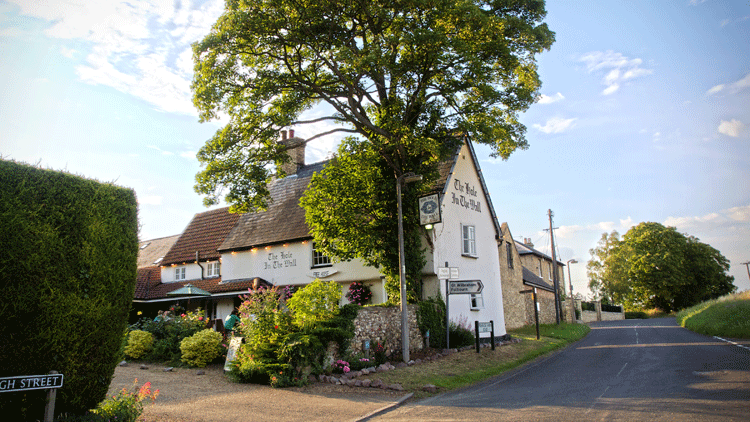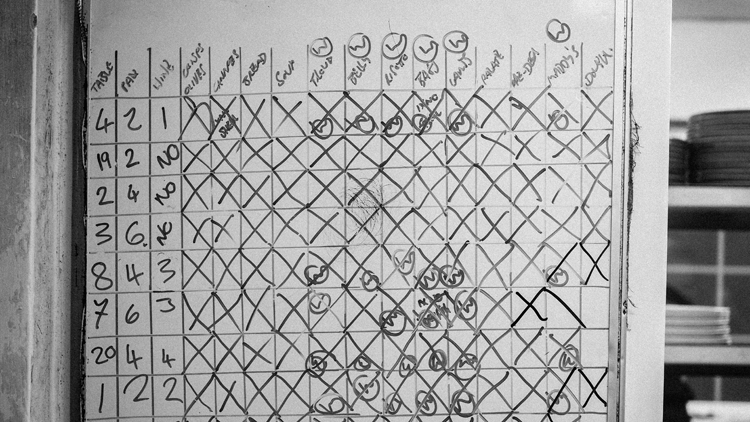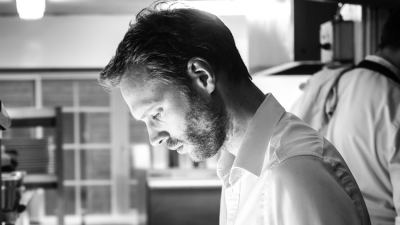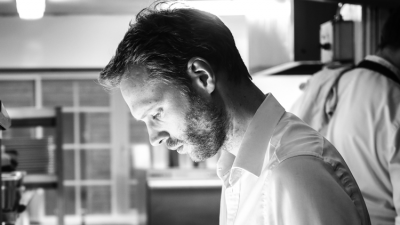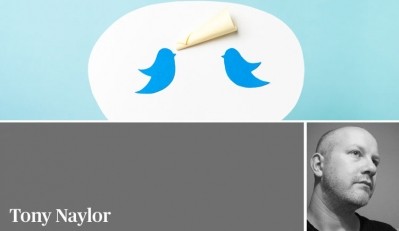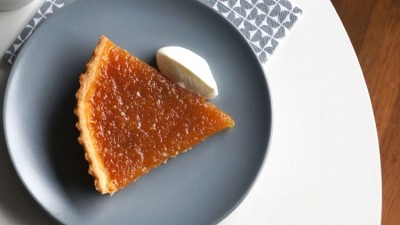How to close a restaurant
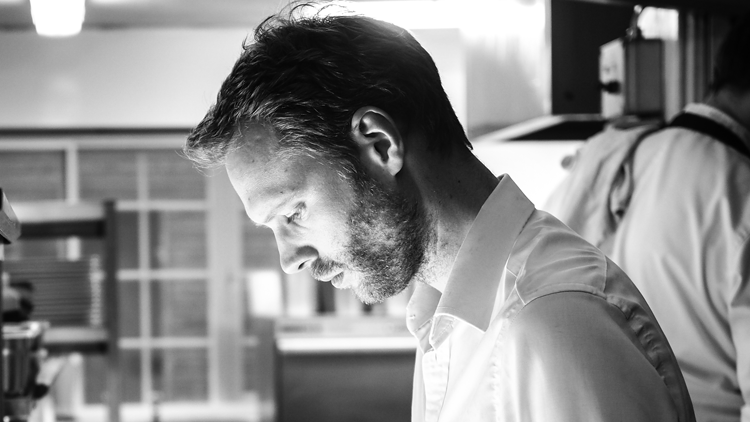
In January of last year my restaurant, The Hole in the Wall, was listed as one of the top 100 in the UK by The Sunday Times. It was chosen by a panel that included Jamie Oliver, Bee Wilson and the great AA Gill.
Just six months later, I cooked my last service and closed the doors for good.
During the previous five and a half years, the restaurant had enjoyed both critical, and commercial success. National reviews in The Sunday Telegraph and The Independent had been glowing. There had not been a year when the The Hole in the Wall hadn’t featured in all the major food guides and for a rural pub in the Cambridgeshire countryside, midway between Cambridge and Newmarket, we were consistently busy.
Over 10 services we turned over between £12,000 and £14,000 a week. Saturday nights, when we cooked a regularly changing tasting menu, were regularly booked up a month ahead, as were Sunday lunches.
On the surface the restaurant was a huge success, opened at the height of a recession and yet still commercially viable. ‘Don’t spend all your money at once’ a regular customer told me after a busy weekend lunch service. I smiled non-committally, half-mumbled a reply and made my excuses about being needed in the kitchen.
I came to the industry relatively late, bypassing the usual well-worn routes by cooking my way to the final of MasterChef in 2010. My first ever service was under the keen eye of Tony Fleming and the watchful gaze of two television cameras. And I loved it. I adored the speed, the intensity, the pressure, the camaraderie. The immediacy and physicality of the finished product was a stark contrast to the ethereal nature of the work I’d undertaken in the offices of a marketing company.
The suspicions I had harboured since my teenage years that I wanted to cook were confirmed during those four hours. The ensuing rounds of the intense televised microcosm of a reality television show only clarified it further.
The Hole in the Wall provided an ideal, and low-cost, way of turning my interest into a career. It was close to home and on a shoestring budget of about £20,000, and generous friends and family, we set about transforming it as best we could. A lick of paint, some new crockery, cutlery and glassware and a few pots and pans was about the sum of it. We opened two weeks after signing a three-year lease with my landlord, the brilliant Stephen Bull, whose status within the industry could deservedly be described as legendary.
Those first 12 months provided the steepest learning curve imaginable. My experience in kitchens had been limited to some extreme examples including cooking a lunch service at the three-Michelin starred Le Calandre in Italy, an incredible week-long challenge in India, creating a signature dessert for Alain Ducasse and his guests at The Dorchester and a two-week stage at a restaurant in Dorset. Initially, 90-hour weeks were not unusual, but it was enjoyable. The menus were just the right side of ambitious and every service provided valuable lessons. Perhaps we didn’t need to cook risotto from scratch and to order. Maybe we can take a couple of elements off each dish. I learnt about what compromises it was possible to make without negatively impacting the final product on the plate.
Quickly, those long weeks turned into months and those months into years. When Stephen contacted me to ask if I would be renewing the lease there was no hesitation and I re-signed immediately for a further three years. As company director as well as head chef, my salary was tiny. The hope was that it would be topped up with dividend when the restaurant made enough profit, which during the third year was close to £50,000. Frustratingly, this was wiped out in its entirety thanks to a hubristic expansion attempt to take on another pub, this time to the south of Cambridge. I pulled the plug on it after 12 months – any longer and its failure would have sunk The Hole in the Wall too.
I retreated, consolidated and worked harder than ever to swing things round. I re-wrote menus to raise margins, worked almost every shift and did paperwork on Mondays when the restaurant was closed. Lines of credit which had been stretched further than I was comfortable with were reined in, and after six months was able to start taking on more staff to help ease the workload both in the kitchen and administratively.
Despite never having paid for an advert or marketing campaign, the restaurant was getting national recognition, picking up awards and inching its way into a number of ‘Best of’ lists, albeit fairly low down. I was sure that I’d soon be able to start topping up a meagre salary with some hard fought dividend payments, reasonable remuneration being the icing on the cake of what was turning out to be a very satisfying, but often exhausting, career.
But even the largest tank isn’t bottomless. Retrospectively, it can be easy to pinpoint the exact moment when a decision is made. The reality is that the gradual erosion of energy and enthusiasm occurs over a number of years. Much like a house that finds itself teetering dangerously on the edge of a precipice, I know I came agonisingly close to falling myself. I have a stark memory of a mid-afternoon trip to the cash and carry to pick up washing up liquid and other sundry items that had been missed off the weekly drinks order.
"The reality is that the gradual erosion
of energy and enthusiasm occurs over
a number of years"
It was a Saturday, the end of the month. Lunch service had been busy and chaotic. There was an extensive prep list for the evening and there was still mise en place to do for Sunday. Rest would be short, the taste of toothpaste still on the tongue when it was time to wake up. I suppose ‘burn-out’ might be the most appropriate term for what I felt at that moment, in the miserable car park of an industrial estate on a warm afternoon. I sat, paralysed, in the seat of my car, suddenly overwhelmed with the magnitude of what lay ahead, both in the immediate and longer term.
There was a year left on my lease. There were 22 members of staff on the payroll. I couldn’t remember the last time I’d had a Friday or Saturday night off. I’d been married less than a year and had turned down almost every social occasion I’d been invited to in the past five years. I became aware of frightful irony that despite the inherent nature of hospitality being about giving, it is too, an amazingly selfish industry, placing demands on friends and family in ways that only gradually become apparent.
Knowing how close I came to a forced closure just a few years previously, an active decision to shut the doors, to be able to decide the nature of one’s own fate, is extremely liberating. I wouldn’t go so far to say that I made that choice while sat in a car park on a Saturday afternoon, but artistically it does make for a neat scene and gazing into life’s rear-view mirror, that is the image that always comes to mind.
The run-in wasn’t easy, that’s for certain. The rota remained bloated thanks to the serious illness of a senior staff member and the perceived necessity to staff for the ‘busy period’ that would come just after the summer. Some months it ate up over 40% of turnover, causing losses in the region of £800 a week before I managed to get it under control. Price rises hit margins harder than ever before and I was still working at least nine shifts a week.
In January, a week or so before The Sunday Times list was published, I met with Stephen to explain I wouldn’t be renewing my lease. I told my staff the following day and aside from one, they all committed to working the final six months, something I will remain eternally grateful for.
An awareness of the closure enabled preparations to be made. Knowing how rife gossip is in the industry I spoke to each of my suppliers to explain the situation and began paying off accounts as soon as the statements came in. Staff took holidays owed to them. I did everything I could to make sure that I was able to shut the doors solvent, relationships in tact and proud of everything we had achieved at The Hole in the Wall.
The weights on my shoulders began slowly lifting, knowing that there were just five, then four then three months left. When the time could be measured in weeks it became easier still. We weren’t overly vocal about the closure, but nor was it a secret. Valued customers made their final visits to dine and expressed sadness and empathetic understanding at the decision. As the final few services rolled by, there was a sense of happiness and peace among almost all the staff and customers. There was a satisfaction in being involved in something so special, but also a recognition and understanding that a natural end point had been reached.
Our final service, a Friday night, had been a sell out for weeks. It was followed by two days of celebrations, tears, hugs, speeches, gifts, happiness, relief and an overwhelming sense of pride. Pride, of course, for everything that had been achieved over the past six years but also of something more: a pride in being able to move on, head held high, sanity returning and ready to face the next project head on, whatever it may be.
